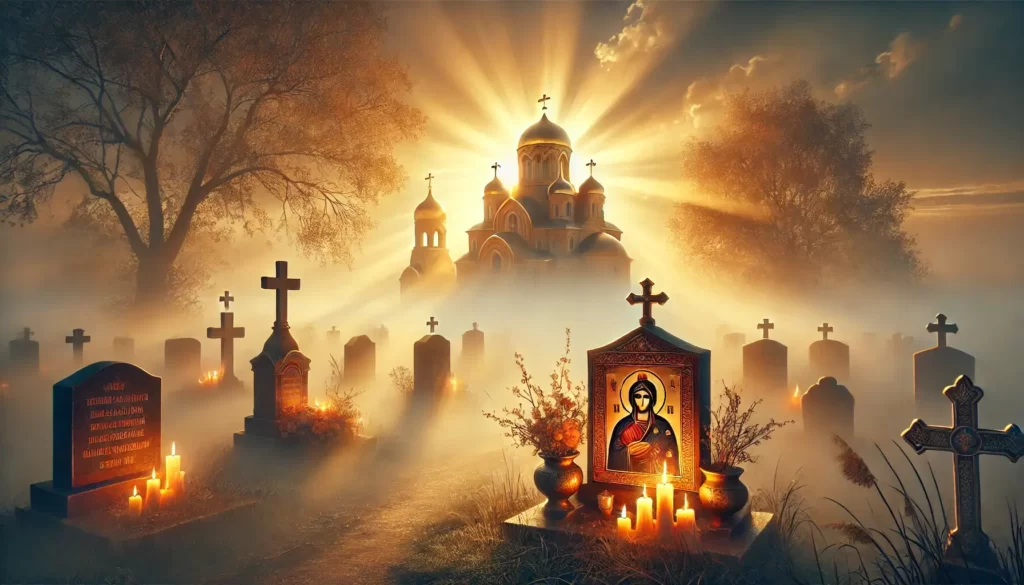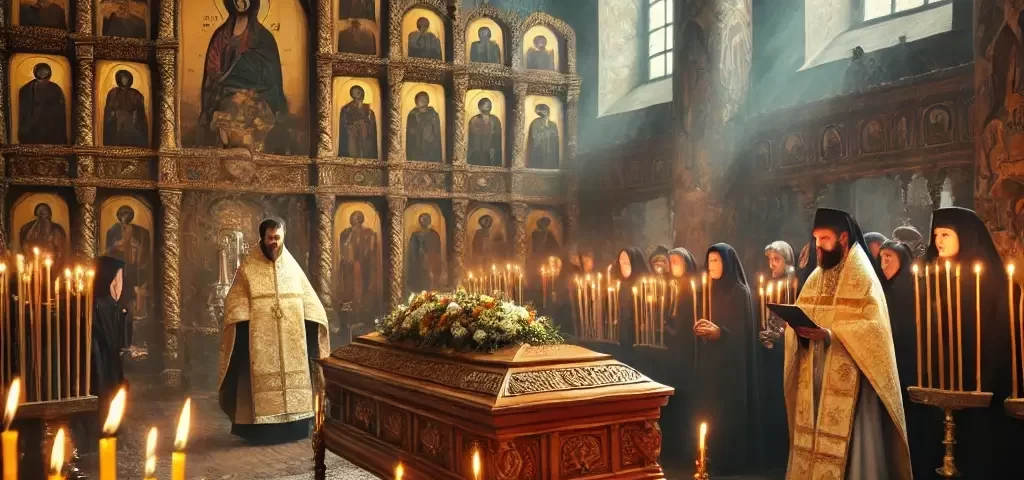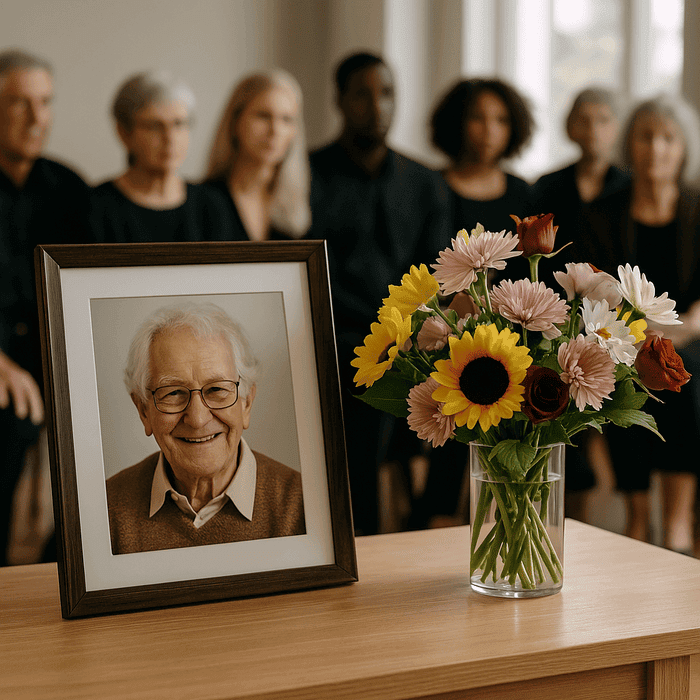Orthodox Christian Funerals

Hindu Funeral Rites
March 24, 2025
Protestant Funeral Services
March 24, 2025Orthodox Christian funerals represent a profoundly symbolic and ordered ritual that expresses belief in resurrection and eternal life. Centuries-old traditions provide a service that is solemn yet hopeful, comforting the bereaved while praying for the peaceful transference of a departed soul into the afterlife.
Unlike most of the other Christian denominations, Orthodox funerals are conducted in an order of fixed liturgies comprising prayers, hymns, and readings from scripture. Mourning is not considered finished at burial, and memorial services three, nine, and forty days, and a year after death continue the honoring of the deceased and spiritual support.
Stages of an Orthodox Christian Funeral
The three major phases of an Orthodox funeral include the Wake, the Funeral Service, and the Burial with Graveside Prayers. Everything has deep spiritual symbolism, connected with the teaching of the soul after death within Orthodox theology.
The Wake (Parastasis)
The wake-also called Parastasis or Panikhida-is a service of vigilance on the eve of the funeral. The family and friends stand around the deceased, praying and reading scripture in order to help the soul into the afterlife.
- The body is traditionally placed in an open casket at home or in a church, facing east, symbolizing resurrection.
- A priest leads the chanting of Psalms, the Trisagion (Thrice-Holy) Hymn, and the Prayer for the Departed.
- Candles and incense are used throughout the vigil, representing the light of Christ.
Some Orthodox families hold the wake for three days, reflecting the belief that the soul remains near the body before departing toward judgment.
The Funeral Service
This is a truly liturgical service, essentially structured around the continuous use of scripture, hymns, and prayers that emphasize repentance, divine mercy, and resurrection. The Orthodox funeral service does not contain personal eulogies, as some Christian services do; it is entirely centered around prayer.
The service typically includes:
- The Trisagion Hymn (“Holy God, Holy Mighty, Holy Immortal, have mercy on us”) repeated multiple times.
- Psalm 90, a reflection on God’s protection and deliverance.
- Readings from the Gospels, often including John 5:24-30, which speaks of resurrection and eternal life.
The priest will anoint the body with oil, signing the cross on the forehead, lips, and hands as one final blessing for burial. Afterward, people would go up to the casket to give him the last kiss, out of respect to the deceased.
Burial and Graveside Service
The Orthodox Church strictly prohibits cremation, as it contradicts the belief in bodily resurrection. The deceased is buried facing east, a direction that symbolizes awaiting Christ’s return.
The priest says some more Trisagion Prayers at the graveside, where the coffin is lowered. The service ends with mourners throwing handfuls of earth over the casket, indicating that the body has gone back to dust.
Orthodox traditions extend beyond the funeral itself. Families observe a series of memorial services:
- Three days after death – Honoring Christ’s resurrection.
- Nine days after death – Representing the angelic ranks and intercession for the soul.
- Forty days after death – Marking the soul’s transition toward eternal judgment.
These commemorations continue at six months, one year, and annually thereafter, reinforcing Orthodox Christianity’s emphasis on continual prayer for the deceased.
orthodox Christian Beliefs on Death and Afterlife
The death, according to teaching in the Orthodox Church, is not an end but a passing into eternal life. In contrast with other Christian denominations, which may stress immediately going to heaven or hell, in Orthodox Christianity, the emphasis lies in how the soul travels on after death. This shapes much of the funeral customs and ongoing prayers for the dead.
The Concept of Life After Death
In Orthodox Christianity, following a person’s death, his or her soul spends forty days en route to the Final Judgment. During the first three days, it is thought to stay with the body, then takes a turn toward its destination, during which it undergoes trials before the end, between the ninth and fortieth days.
Prayers by the family and the church support the soul in this journey according to beliefs. In fact, rather than predestination, emphasis is on God’s mercy, and thus continuous intercession is encouraged on behalf of the one who died. On the Second Coming of Christ, the final judgment will reunite all souls with their resurrected bodies.

The Role of Prayer and Intercession for the Deceased
Prayers for the dead play an important role in Orthodox tradition. As declared by the Church, the living have the capacity to offer intercessory prayers that help the soul to pass on in peace. For this reason, memorial services are held at:
- Three days after death, symbolizing Christ’s resurrection.
- Nine days after death, asking for the departed to be numbered among the righteous.
- Forty days after death, marking the soul’s final destination before judgment.
Memorial services also continue, and they are indeed practiced years and decades after burial since, with respect to God’s reckoning in Orthodox belief, there is no time for prayer. They are traditionally services incorporating the Trisagion Hymn, the reading of a psalm, and the blessing of Koliva.
Modern Adaptations in Orthodox Funerals
While the Orthodox Christian funeral traditions remain largely unchanged, some adaptation has taken shape in response to practical and cultural changes: consideration of cremation policies, for example, or regional differences in the range of traditions, and even digital formats for funeral services.
Cremation Policies in the Orthodox Church
While most Christian denominations have come to accept the use of cremation, the Orthodox Church remains staunchly opposed. Believing in a bodily resurrection, the act of cremation is tantamount to an intentional destruction of the body-a denial of the theology of burial. Most Orthodox clergy will refuse to officiate funerals where cremation has been chosen.
But in cases of legal necessity, or extreme poverty, when nothing else can be done, dispensation is granted by the Church. In general, however, Orthodox families are encouraged to avoid cremation and to follow more traditional burial practices.
How Funeral Traditions Vary by Region
Orthodox funeral customs vary significantly across different cultures and jurisdictions. Some key differences include:
- Greek Orthodox funerals – Highly structured, following a strict liturgical format. Families hold multiple memorial services extending beyond the first year after death.
- Russian Orthodox funerals – Often incorporate longer chants and hymns, with mourners offering final prayers before sealing the casket.
- Ethiopian Orthodox funerals – Family members engage in days of fasting and prayer, emphasizing deep communal mourning.
- Serbian Orthodox funerals – Include a custom of offering a meal (dacha) after burial, symbolizing unity with the deceased.
While the core beliefs remain the same, cultural elements shape how Orthodox communities approach funeral rituals.
Digital Streaming of Funeral Services
Since the Orthodox communities were across a number of countries, recently the live-streaming of funeral services is more frequent. Video calls and streaming allow families to be joining with distant relatives in praying and other rituals. Even though digital services are not substitutions for physical ceremonies in the Church, they make it possible for orthodox believers to be in contact in mourning and prayer.


